Top 12 Most Beautiful Historical Sites in Iceland
Iceland may be a fantastic tourist destination not only for environment enthusiasts, but also for history buffs. Many of the most popular sites date back ... read more...thousands of years, and others are well-known for their historical significance. Toplist has compiled a list of the top 12 most beautiful historical sites in Iceland.
-
Þingvellir National Park has been designated a UNESCO World Heritage Site. Since 930 AD, Icelanders have used this location as a gathering place for the Icelandic Parliament. Because of its historical significance, Icelanders have celebrated their national holidays in Þingvellir since then. This area also served as a symbol for local poets. The assembly took place in the striking rift valley, which is thought to have been created 10,000 years ago.
Þingvellir is presently a national park in the municipality of Bláskógabyggð in southwestern Iceland, some 40 kilometers (25 miles) northeast of Reykjavik, Iceland's capital. Þingvellir is a historical, cultural, and geologically significant location in Iceland, as well as one of the most popular tourist destinations. The park is located in a rift valley that marks the top of the Mid-Atlantic Ridge and the tectonic plate boundary between North America and Europe. Þingvallavatn, Iceland's largest natural lake, is located to its south.
Þingvellir National Park, where the geology and ecosystem of Thingvallavatn form a unique whole, has been recognized as a world natural wonder in recent decades. The Atlantic Ocean ridge that extends through Iceland is home to Þingvellir National Park. In the gorges and fractures of the area, you can witness the effects of the erosion of the earth's crust.
Location: Þingvellir, 801, Selfoss, Iceland
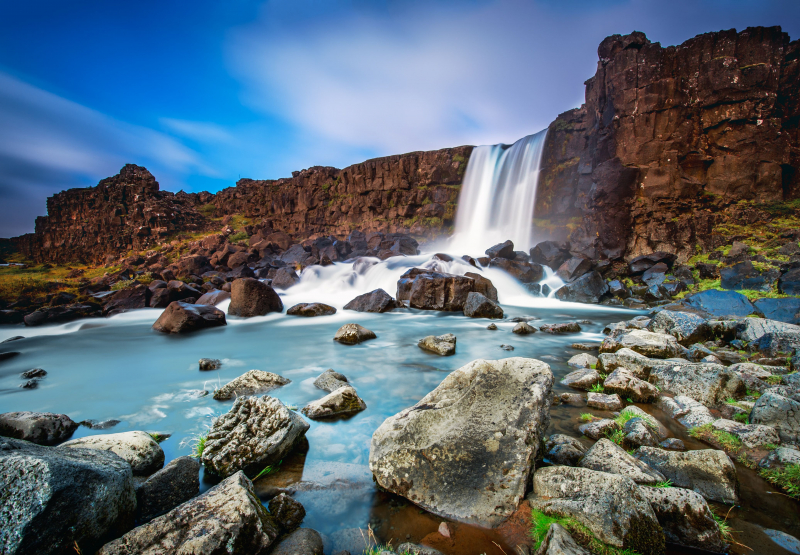
Photo: TripSavvy 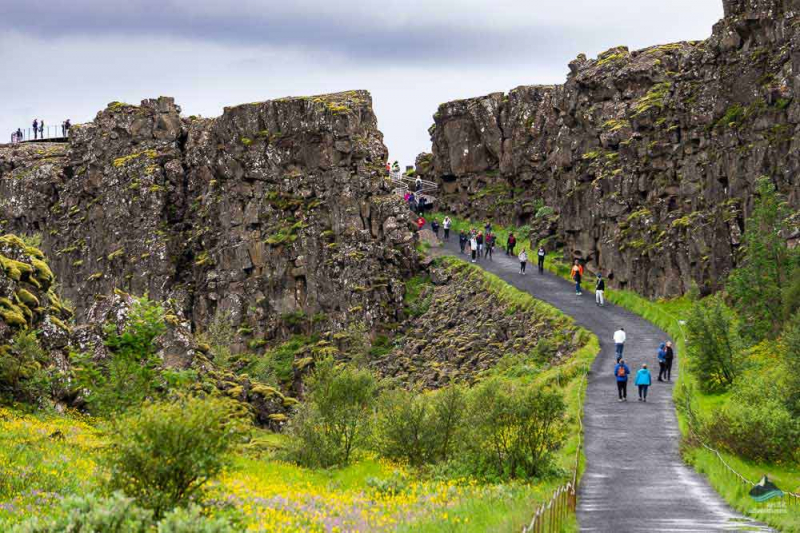
Photo: Chudu24 -
Stykkishólmur is a town and municipality in Iceland's western region, on the Snaefellsnes peninsula's northern tip. It serves as a regional hub for services and trade. The majority of people rely on fishing and tourism for a living. Baldur, a ferry, crosses the Breiðafjörður fjord to the Westfjords. It also serves as the entrance to Flatey. Stykkishólmur's origins can be traced back to its natural harbor. Early in Iceland's history, the place became an important commercial post: the first trading post in Stykkishólmur dates from the mid-16th century, even before Denmark imposed the Danish–Icelandic Trade Monopoly (1602–1787). Trading has been at the heart of the settlement's existence since then. The Norwegian house, erected in 1828 by Árni Thorlacius for his residence and businesses, has been refurbished and now houses the local museum.
Another place known for trading is Stykkishólmur. Around 400 years ago, it was a bustling place. Apart from that, Stykkishólmur is known for having the oldest meteorological station in the country, if not the entire world. The station first opened its doors in 1845, and it is now housed in the building's native folk museum. Several old residences in the area contribute to the comfort and uniqueness of this location.
Location: Iceland
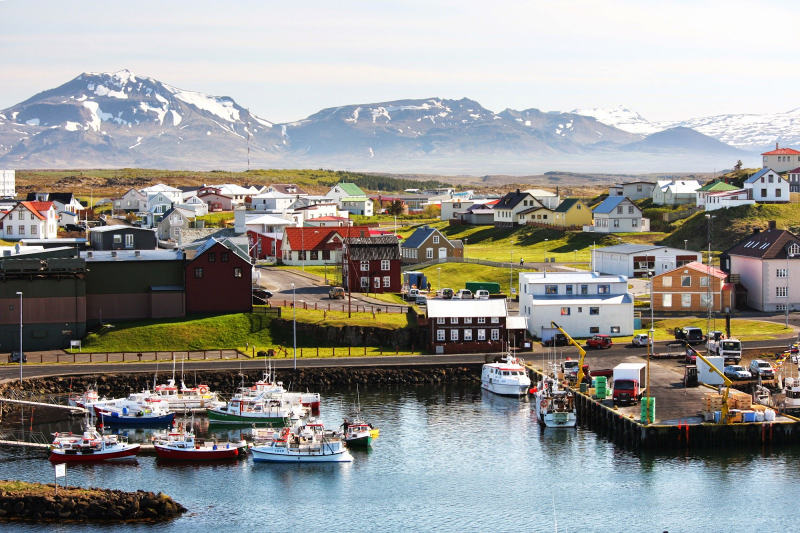
Photo: Iceland24 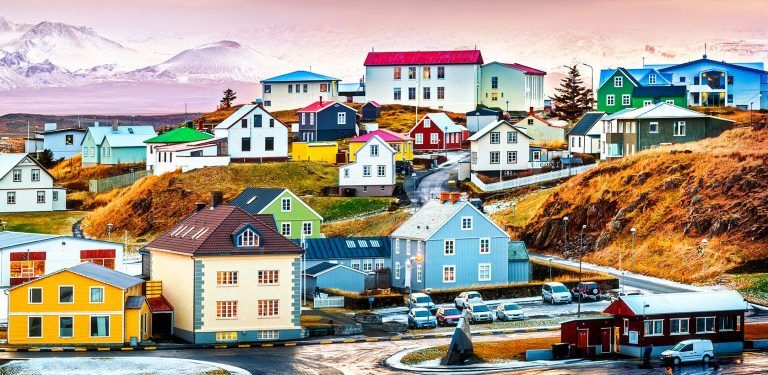
Photo: sworld.co.uk -
Hallgrímskirkja is a unique church because its design was inspired by the shape created when lava changes into basalt rock. This particular church was created by Gudjon Samuel in 1937. The building of the structure took place between 1945 and 1986. The tower, which stands 239.5 feet tall, dominates Reykjavik's skyline (73 m). From the top of the church, one can see the entire city, as well as the landscapes and the sea near to the capital.
Reykjavík is guarded by Hallgrímskirkja. In Iceland, the church serves as both a parish church and a national sanctuary. Its stepped concrete facade pays homage to modernity while also serving as a reminder of Iceland's nature. The church is named after Hallgrímur Pétursson, a 17th-century cleric and author of Hymns of the Passion. Hallgrímskirkja is a component of the Evangelical Lutheran Church of Iceland and is an Evangelical-Lutheran church. Hallgrímskirkja is one of Iceland's most popular tourist attractions. Thousands of people visit the church every day. The church is open to the public and admission is free. The cost of admission to the tower is ISK 1000 for adults and ISK 100 for children. Because Hallgrímskirkja is a busy church, it must close the church and tower without warning owing to activities and concerts.
Location: Lutheran parish church in Reykjavík, Iceland
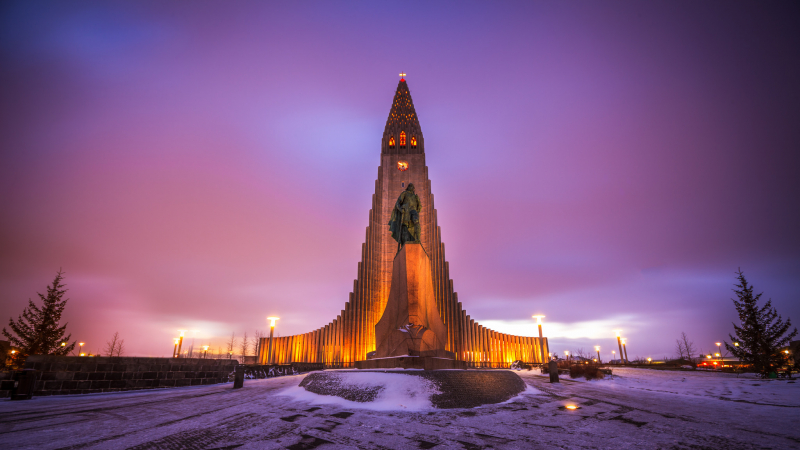
Photo: Culture Trip 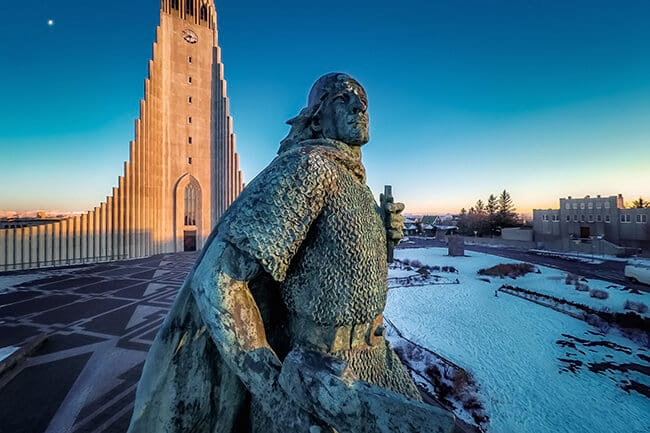
Photo: Gray Line Iceland -
Oddi is a small settlement and church in the Rangárvallassla region of Iceland. During the Middle Ages, Oddi at Rangárvellir was a cultural and learning hub in South Iceland.
Oddi is a significant historical site located in the fields of the Rangá river. When a church was built there in the middle of the 11th century, it became famous, and it is now one of Iceland's oldest church sites. For centuries, it served as an academic, political, and cultural center. The current Oddi church was built in 1924 and has just undergone a complete restoration, making it a particularly intimate and lovely place of worship. Hotel Rangá provides wedding packages that include a ceremony in this old and quaint chapel in stunning surroundings, followed by a reception at the hotel.
According to historians, a church has stood on the site of Oddi since Iceland's conversion to Christianity in the year 1000, with the current structure constructed of wood in 1924. Many treasures from the church's history can be found within this modest church, which seats about 100 people. A silver chalice from the year 1300 and an altarpiece crafted by a local carpenter in 1895 are among the items in this collection. Gujón Samelsson designed the church, which is known for its white exterior and crimson roof.
Location: Rangárvellir in Rangárvallasýsla, Iceland
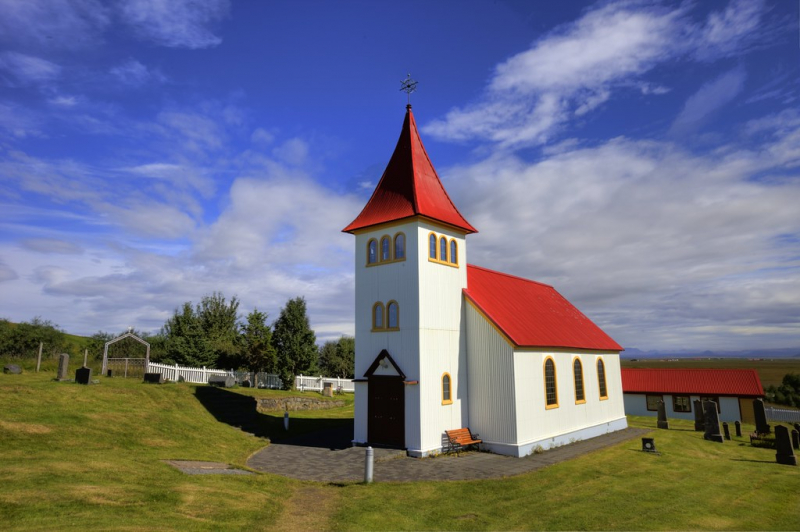
Photo: Flickr 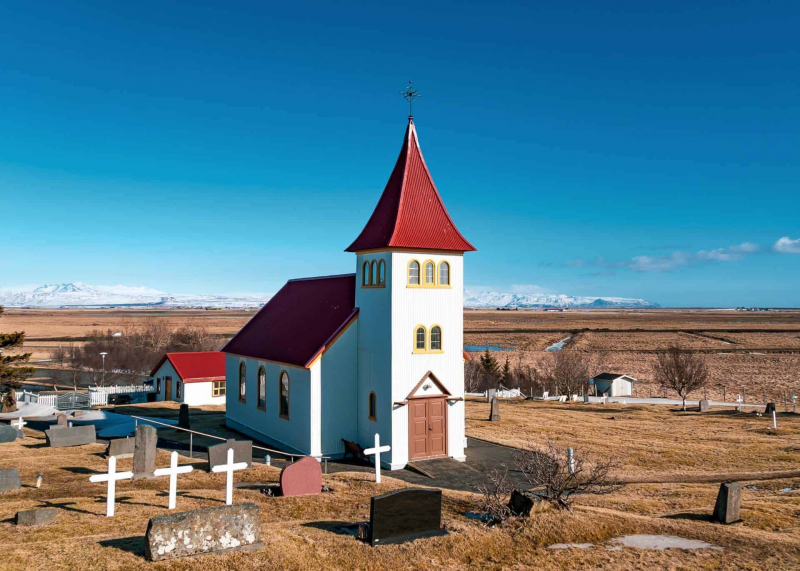
Photo: Hotel Ranga -
Lögberg, or Law Rock, was a rocky outcropping in southwest Iceland and one of the most beautiful historical sites in Iceland that served as the site of Iceland's Althing parliament's assembly. The first Althing met at Þingvellir, a magnificent landscape easily accessible from the southwest's populated areas.
Because of the changing terrain of the rift valley over 1000 years, the exact site of the Lögberg is unknown. Hö Þingvellir, two plausible places have been identified: one is a flat ledge at the top of a slope known as Hallurinn (now marked by a flagpole), and the other is a rock wall in the Almannagjá fault. The Hestagjá ravine has been suggested as an ideal location.
Lögberg, the Law Rock in Thingvellir National Park, is an important aspect of Iceland's history. A speaker who would read aloud the rules of the commonwealth in Lögberg during the Icelandic Commonwealth period of 930 to 1262. Lögberg was a place where members of the community might come together to settle a dispute, share news, or discuss significant issues. Many Icelandic sagas honored Lögberg, particularly when Iceland converted to Christianity. The usage of Lögberg as a venue to talk and settle legal disputes fell out of favor in 1262, when Icelanders established an alliance with the Norwegian monarch, and its location has long been a source of contention among historians and archeologists.
Location: 7V5H+V3R, Thingvellir, Iceland
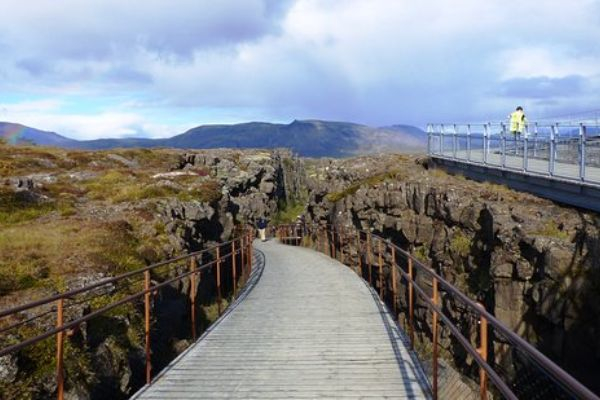
Photo: Tripadvisor 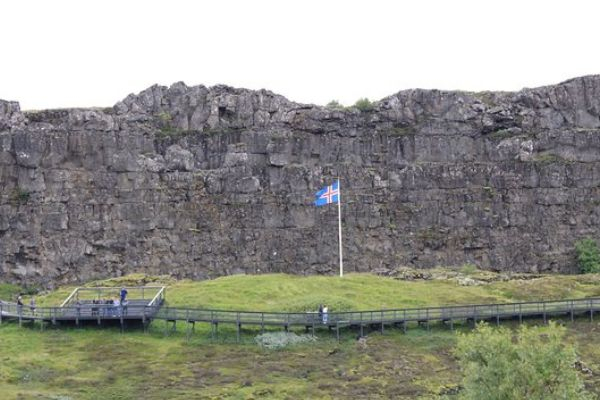
Photo: Tripadvisor -
This magnificent waterfall may be seen in Northern Iceland. It is well-known for its beautiful vistas, as it is a large river waterfall and this is in the list of the most beautiful historical sites in Iceland. Þorgeir Ljósvetningagoð flung statues of Norse gods into the Goðafoss Waterfall after Iceland accepted Christianity. It has a fascinating history that attracts and fascinates visitors from all over the world.
The "Waterfall of the Gods" is the moniker given to Goðafoss Waterfall. Some people say that the name stems from the waterfall's divine splendor. However, a Viking leader named Þorgeir Ljósvetningagoði is mentioned in old Icelandic folklore as the source of the waterfall's name. The waterfall was named after Þorgeir, who is claimed to have thrown his Pagan statues into it. No one truly knows the true tale behind the waterfall's name but keeping it a mystery may help to keep it mythological.
Goðafoss is one of Iceland's great gems and one of the country's largest waterfalls. The river Skjálfandafljót, which flows through a 7000-year-old lava field from the Trölladyngja volcano, is the source of its water. The waterfall cascades over a 30-meter-wide (98-foot-wide) horseshoe-shaped rock in the center, which divides the waterfall in two. The first component is around 9 meters (30 feet) tall, while the second is 17 meters (55 feet) tall.
Location: the river Skjálfandafljót in north Iceland
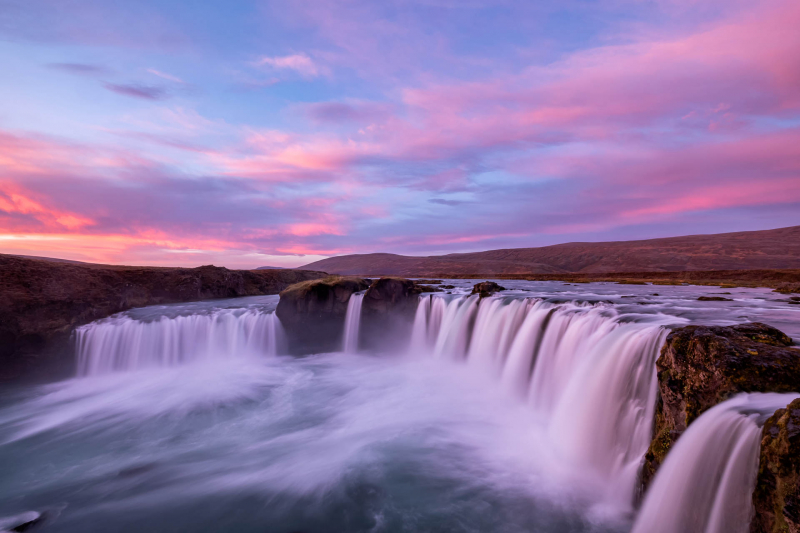
Photo: www.ntounas.gr 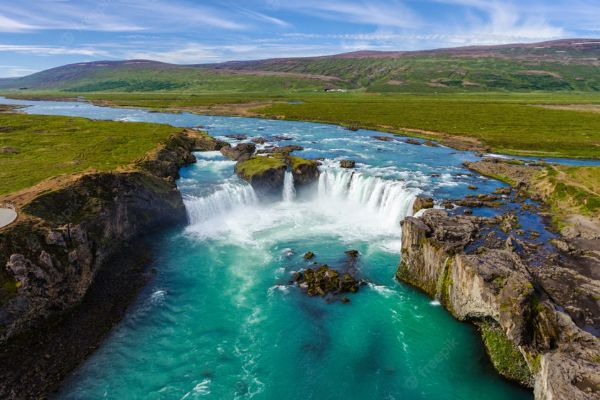
Photo: Freepik -
This location, which is around 11 kilometers from Akureyri, was formerly a prominent trade mart in medieval times. The best time to visit is in July when local craftsmen are re-creating the medieval market. Following the reconstruction, they resume selling handcrafted things in the manner in which they were sold during medieval times. According to archeologists, the site was a bustling commerce hub until the 16th century.
During the Middle Ages, Gásir was the primary commercial post in northern Iceland, and it is referenced numerous times in Old Icelandic Sagas from the 13th and 14th centuries. Archaeological studies in the area have revealed that it was a trading post until the 16th century, when Akureyri may have supplanted it as trade expanded further south.
Gásir is one of Iceland's most important archaeological sites. It is located 11 kilometers north of Akureyri and served as the primary commercial station in northern Iceland from 1100 to 1550, predating Akureyri. From 2001 to 2006, a large archaeological excavation took place there. It connects Gásir to trading locations in Scandinavia, Northern Europe, and Greenland. During the summer, people would congregate for a few weeks to deal with foreign merchants, purchasing exotic products and necessities. There was also onsite processing of the highly expensive Nordic gold, sulphur, walrus ivory, and falcons, as well as an exceptional amount of ceramics.
Location: Dagverðareyrarvegur, Iceland
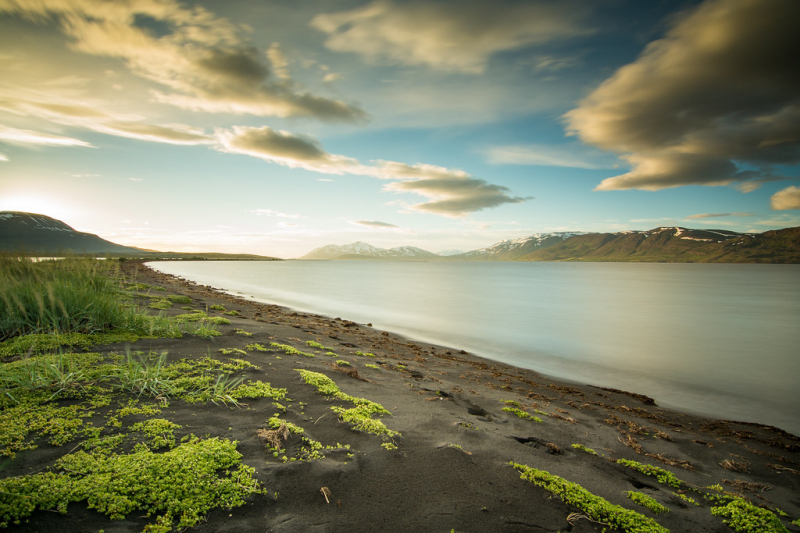
Photo: Flickr 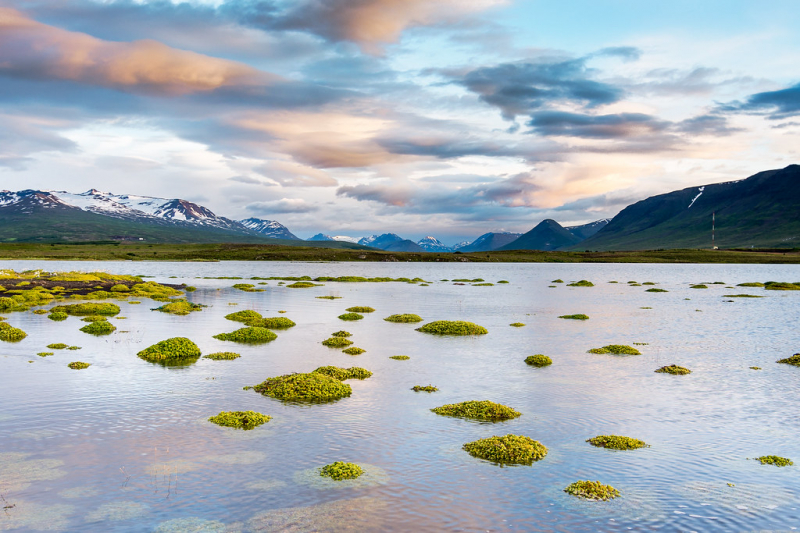
Photo: Flickr -
Árbær was a working farm long into the twentieth century, and the museum first opened its doors in 1957. Árbær is now a museum available to the public, with more than 20 structures forming a town square, a village, and a farm. The majority of the structures have been transferred from Reykjavik's downtown area.
Árbær Open Air Museum strives to capture the architecture, way of life, and lifestyles of the past in Reykjavik, and visitors can witness domestic animals throughout the summer. The Museum hosts a number of exhibitions and events that focus on specific times in Reykjavik's history. Craft days, vintage vehicle shows, Christmas exhibits, and other events are among them. The Árbær Open Air Museum has something for everyone.
By visiting the Árbær Open Air Museum, you will gain a thorough grasp of the capital city's folklore. The Reykjavik Society was founded in response to concerns about Reykjavik's regional history. As a result, this museum was established to address these issues and to investigate strategies for re-establishing the town's past. This included the restoration of agricultural buildings, which is why the museum is open to the public. The professor's house, an exhibit with ancient trains, a typical stable, a blacksmith's house, and an old slaughterhouse are all available for viewing. In one of the museum's most recent exhibits, you may also learn about archaeological discoveries.
Location: 4, 110, Kistuhylur, Reykjavík, Iceland
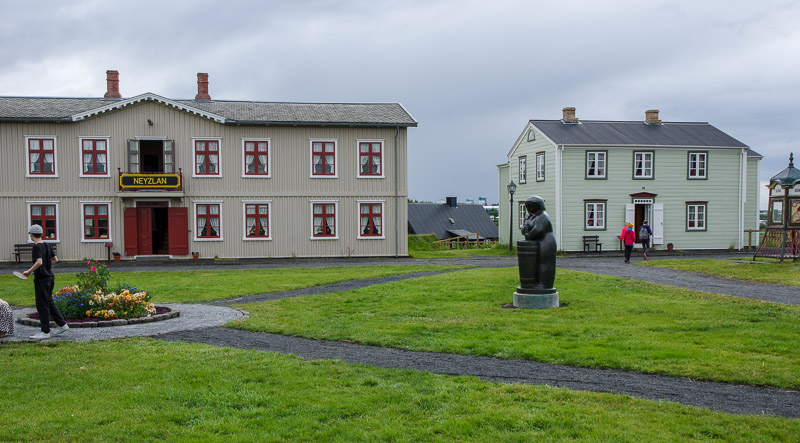
Photo: Iceland With Kids 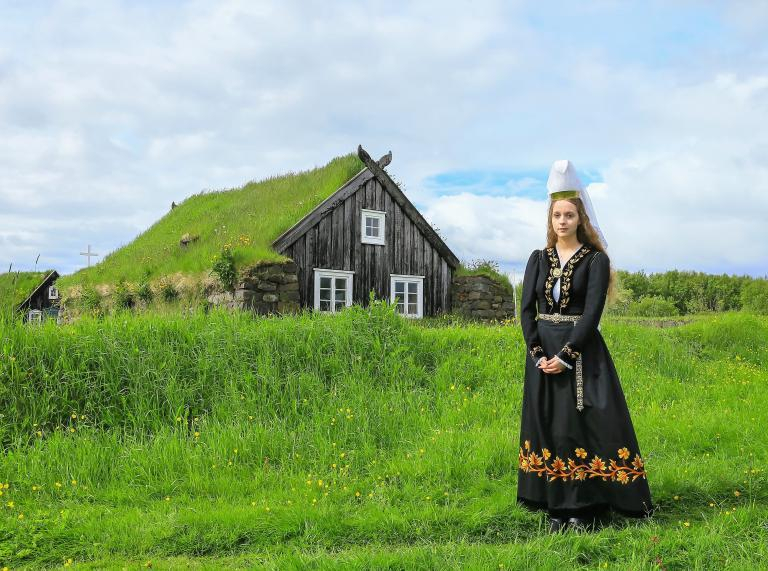
Photo: visitreykjavik.is -
A stunning old turf church named Vimrarkirkja Church, hidden away near Skagafjörur in North Iceland, is considered one of the most beautiful historical sites in Iceland. This turf church, according to Kristján Eldjárn, is one of the most clear-cut and magnificent vestiges of old Icelandic architecture.
Vimrarkirkja Church, near Skagafjörur, north Iceland, is possibly one of Iceland's most beautiful churches. The church has a grass roof, black timber exterior, and a brilliant green door with red trim, just like the Viking dwellings before it. The church was constructed in 1834, and the bells were cast in 1630. In 1220, a powerful Chieftain named Snorri Sturluson built a fortification where the cathedral now stands, adding to the attraction and history of the location, according to an Icelandic saga. The turf on top of the church is replaced regularly, but the timber structure is still the same as it was in 1834.Men on one side (south) of the aisle and women on the other side of the aisle may be seen within the church following the Reformation in 1550. (north). There were plans to demolish this lovely turf chapel and replace it with a concrete structure, but Matthas órarson, Director of Iceland's National Museum, battled to keep it standing. The National Museum of Iceland has owned this lovely church since 1936, and it is part of the museum's Historic Buildings Collection.
Location: GGQH+GVP, GGQH+FF, Varmahlíð, Iceland
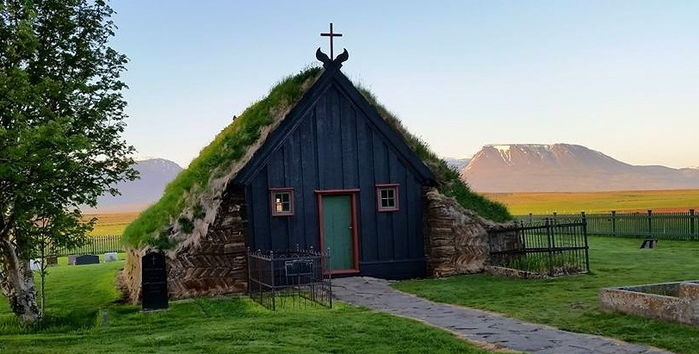
Photo: www.thjodminjasafn.is 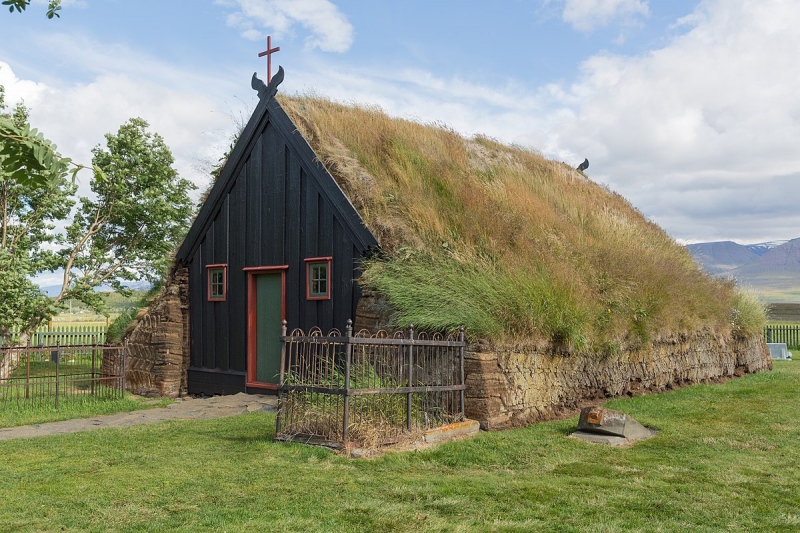
Photo: commons.wikimedia.org -
One of Iceland's best-kept secrets is the Commonwealth farm near Jórsárdalur. The farmhouse, which stands on the location of one of the Age of Settlement's manor farms, is built just as experts predicted. The Commonwealth farm is constructed on the ruins of the former manor farm, Stöng in jórsárdalur, which is thought to have been abandoned following the 1104 Hekla eruption.
The Commonwealth farm (jóveldisbaerinn Stöng) is a 1970s-era rebuilt Viking village. The hamlet was constructed to allow visitors to experience what life was like for Icelanders during the Viking era. The main home is made of wood and has grass and a plant-covered roof, making it almost unnoticeable in the surrounding area. A multi-tiered waterfall can be viewed from behind. The village was built to look like a Viking settlement that was buried in ash following a volcanic eruption in the early 1100s. This village is being excavated right now and is open to the public. Visitors can get acquainted with the structures that Icelanders' forefathers resided in, as well as learn about the conditions they lived in and their daily lives.
The farm building itself is a kind of museum exhibit, displaying archaic handwork where it was not possible to do so, as in historical novels. The Commonwealth farm is a living testament to the fact that the homes of the ancient Icelanders were well-built and magnificent structures.
Location: Þjóðveldisbærinn, Iceland
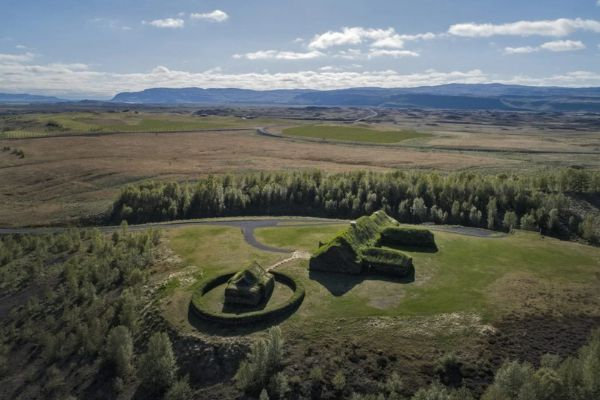
Photo: icelandictimes.com 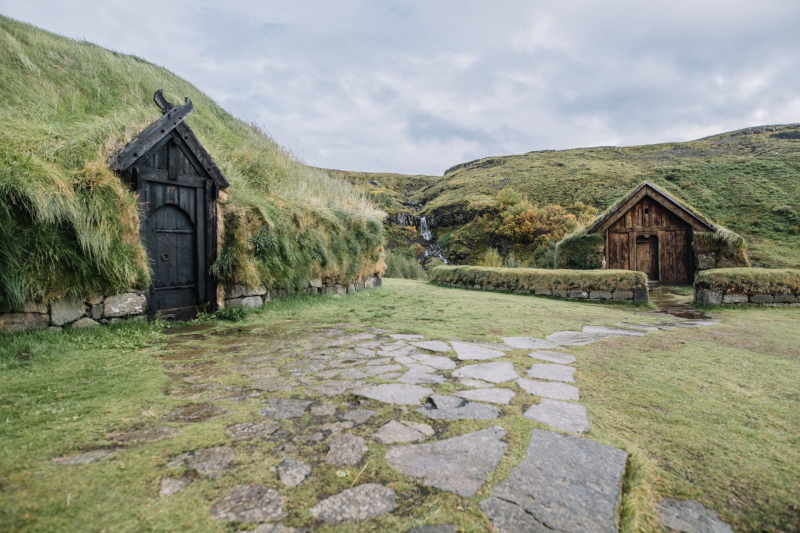
Photo: Follow The Vikings -
Hofdi House, which was built in 1909, is a well-known historical site in Reykjavik and one of the most beautiful historical sites in Iceland. The house was erected for the French consul, and later on, Einar Benediktsson, a poet, lived there. Hofdi House became a venue for formal occasions and official business after its years as a house and consulate. The home was famously used as a neutral location between America and Russia for a 1986 conference between Ronald Reagan and Mikhail Gorbachev. Hofdi House is situated on the water's edge, with views of Mount Esja sweeping across its surface.
Hofdi House has a long history with France. French fishermen frequented Icelandic fishing grounds in the 19th and early 20th centuries. The French consul, Mr. Brillouin, was dispatched to Reykjavik to aid them. He arranged for the importation and installation of a wooden house from Norway in Reykjavik. In 1909, the home was built. In Iceland, there are various wooden "catalog types," but Hofdi House is one of the most magnificent.Hofdi House now serves as the location for official city social functions. Despite being closed to the general public, the grounds are worth a stroll. The high seat pillars that belonged to the Viking chieftain who became Reykjavik's first settler are shown in a sculpture in front of the structure.
Location: Borgartún 105, Reykjavík, Iceland
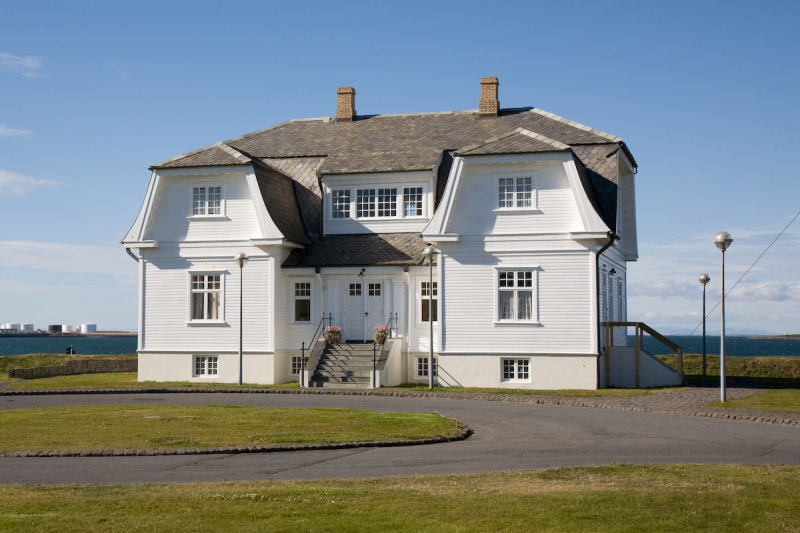
Photo: Wikipedia 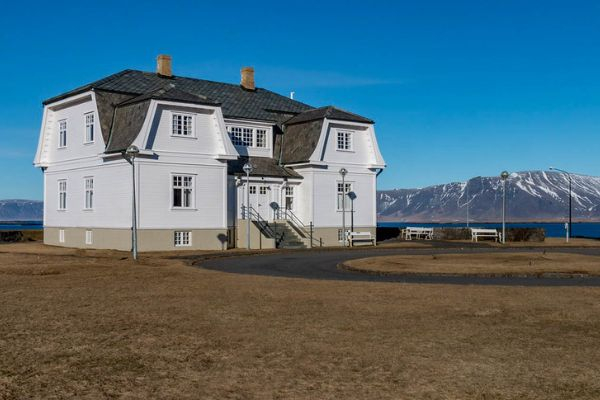
Photo: Flickr -
One of the most famous historical landmarks is the Solheimasandur Plane Wreck in south Iceland. This is considered as one of the most beautiful historical sites in Iceland. The plane, a Douglas R4D-8, was originally a US Navy plane that crash-landed in Iceland in 1973. It is still unclear why the plane crashed. The plane wreck has suffered the brunt of the Icelandic weather and today the wings have fallen off, however, tourists still flock to see this unusual landmark in Iceland. Due to its location, there is a strong chance that floods or even a volcanic eruption could displace or destroy the wreckage.
In 1973 a United States Navy DC plane ran out of fuel and crashed on the black beach at Sólheimasandur, on the South Coast of Iceland. Fortunately, everyone in that plane survived. Later it turned out that the pilot had simply switched over to the wrong fuel tank. The remains are still on the sand very close to the sea.
Location: Sólheimasandur Beach, Iceland
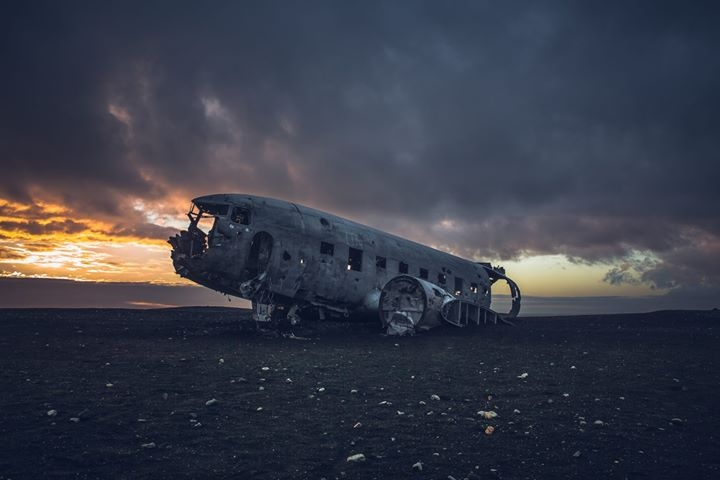
Photo: Iceland Magazine 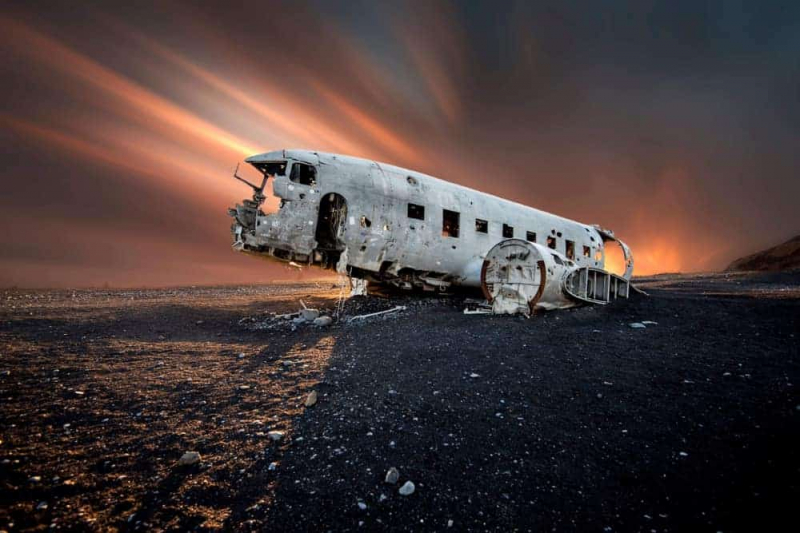
Photo: Follow me away

































